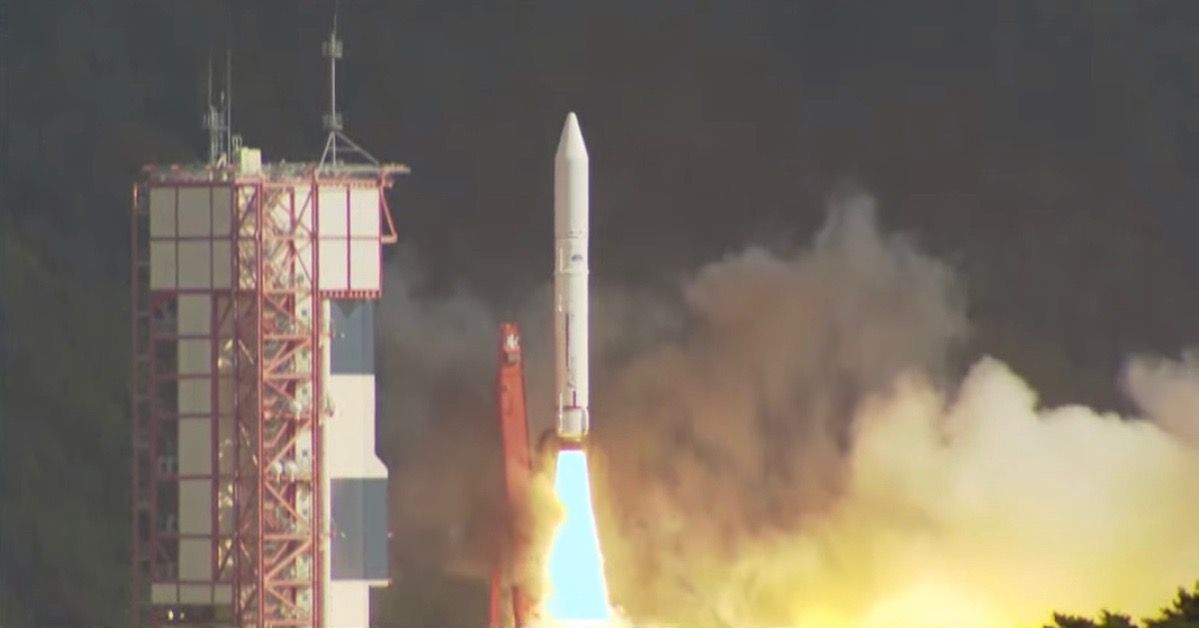
Nine small satellites launched to Earth orbit atop a Japanese rocket tonight (Nov. 8), on a mission to test a variety of spaceflight technologies.
An Epsilon rocket lifted off from Japan’s Uchinoura Space Center at 7:55 p.m. EST (0055 GMT and 9:55 a.m. local Japan time on Nov. 8).
It’s carrying to orbit the Rapid Innovative Payload Demonstration Satellite 2, or RAISE 2 for short, and eight tagalong spacecraft for the Japan Aerospace Exploration Agency (JAXA).
Related: The history of rockets
As its full name suggests, the 240-pound (110 kilograms) RAISE 2 is a technology demonstrator. The spacecraft, which was built by Mitsubishi Electric Corp., will test six different space technologies, including a small sensor called MARIN designed to gauge the position, altitude and velocity of orbiting satellites, JAXA officials said.
The other eight satellites, which were manufactured by a variety of Japanese companies and universities, are even smaller than the 3.3-foot-wide (1 meter) RAISE 2. Four of the rideshare spacecraft weigh 8.8 pounds (4 kg) or less, and the other four tip the scales at between 101 pounds and 137 pounds (46 to 62 kg). (Those satellites will become weightless in orbit, of course, but they’ll still have mass.)
The heftiest of the tagalongs is DRUMS (“Debris Removal Unprecedented Micro-satellite”), a craft built by Kawasaki Heavy Industries. The 2.75-foot-wide (84 centimeters) DRUMS will release a small object in orbit and then capture it, demonstrating tech that could eventually help humanity clean up space junk.
Tonight’s launch was the fifth overall for the 78-foot-tall (24 m) Epsilon, which JAXA began developing in 2007. The solid-fuel rocket is capable of delivering to low Earth orbit payloads as heavy as 2,646 pounds (1,200 kg), according to its JAXA specifications page.
Related stories:
The four previous Epsilon launches — which took place in September 2013, December 2016, January 2018 and January 2019 — were all successful.
The 2019 launch lofted RAPIS 1 (“Rapid Innovative Payload Demonstration Satellite 1”), the primary payload on the first mission developed via JAXA’s Innovative Satellite Technology Demonstration Program. RAISE 2 is the second mission in that program, which seeks to encourage the development of innovative space tech, especially by universities and the private sector.
Editor’s note: This story was originally published on Sept. 30. It was updated after that day’s scrubbed launch attempt, then updated again on Oct. 6 with news of the new target liftoff time, and then again at 9 p.m. EDT on Oct. 6 with news of that day’s scrub. It was updated again on Nov. 8, after liftoff.
Mike Wall is the author of “Out There” (Grand Central Publishing, 2018; illustrated by Karl Tate), a book about the search for alien life. Follow him on Twitter @michaeldwall. Follow us on Twitter @Spacedotcom or Facebook.



